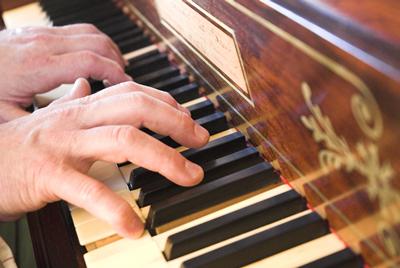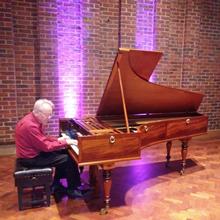New concert series at Chawton House

The Music Department has just launched a new concert series in collaboration with Chawton House Library. The inaugural concert on 10 December starred a newly restored early piano - an 1828 Stodart grand with its Patented Compensating Mechanism - played by staff and students from Music.
To welcome the piano and inaugurate the new music series, Professor David Owen Norris and advanced keyboard students from the University of Southampton introduced the Stodart piano and its music, including early nineteeth century popular music composed and arranged for performance in the drawing rooms of estates like Chawton House. The Music department arranged for the loan and restoration of the piano, and the work was carried out with the aid of the North American Friends of Chawton House.
In 1820 the Stodart workshop invented a ‘compensation frame’ designed to prevent pitch fluctuation due to temperature changes. Although few other makers adopted the precise mechanism, this was an important predecessor to later bracing and allowed heavier strings to be used, creating a richer sound. The piano’s Compensating Mechanism has been much admired by musical experts, and as Professor Norris says: ‘it has the merit of a true una corda, an extraordinary sound not available on all nineteenth-century pianos’. It also has an appearance which is very well-suited to a domestic setting, and will enable Chawton House Library to hold a variety of performances with piano in the future.
Chawton House Library is a research centre housed in the Elizabethan mansion formerly owned by Jane Austen's brother, Edward Austen Knight, in the Hampshire village where Jane Austen lived and worked from 1809. Chawton House is a registered charity, holding a unique collection of early women’s writing circa 1600 – 1830. As well as promoting study and research on women’s writing, the charity’s educational remit includes protecting and conserving the Elizabethan house and grounds, and maintaining a rural English working manor farm of the late eighteenth and early nineteenth centuries, managed using traditional, organic farming methods.
Links to external websites
The University cannot accept responsibility for external websites.
